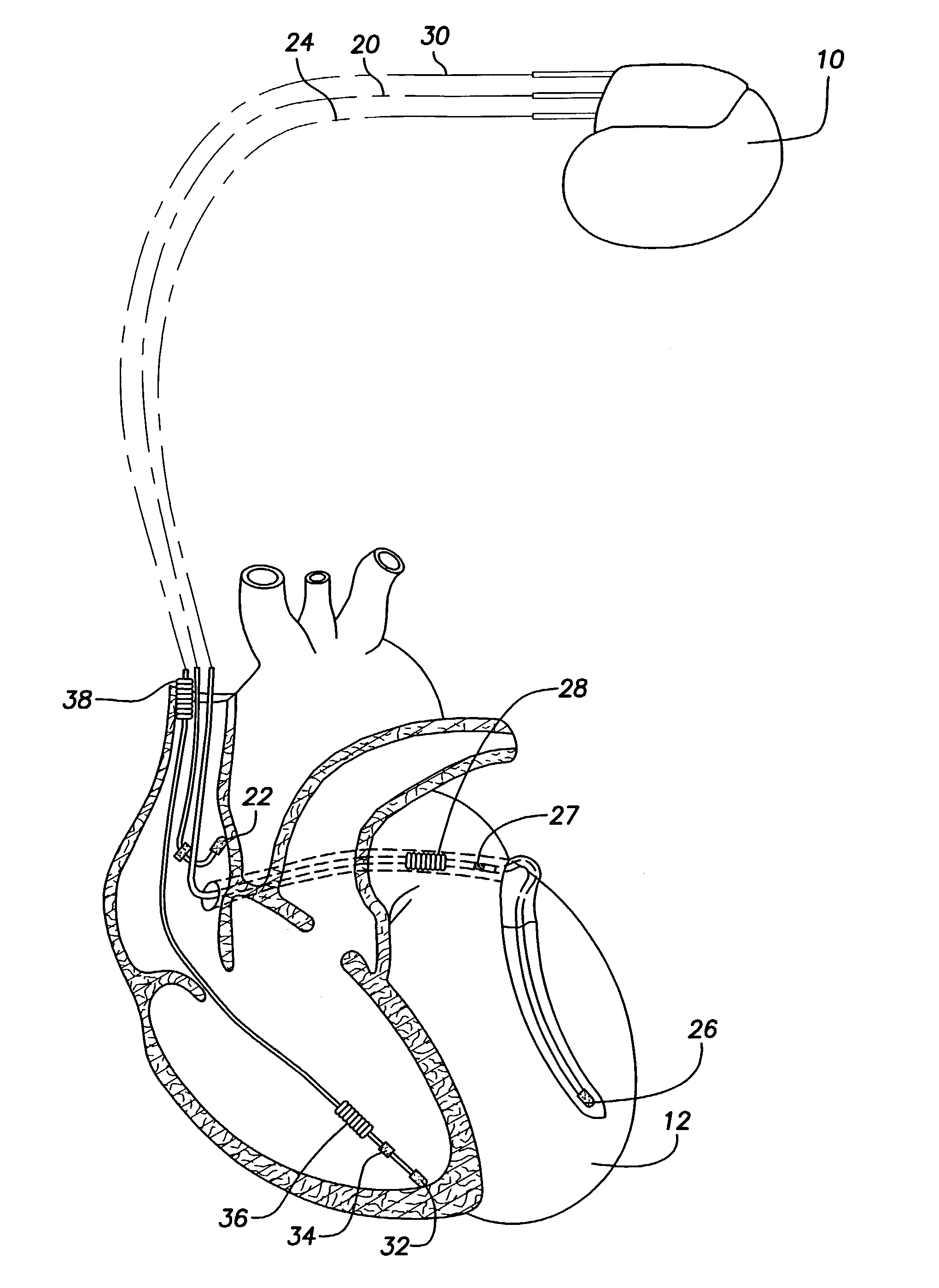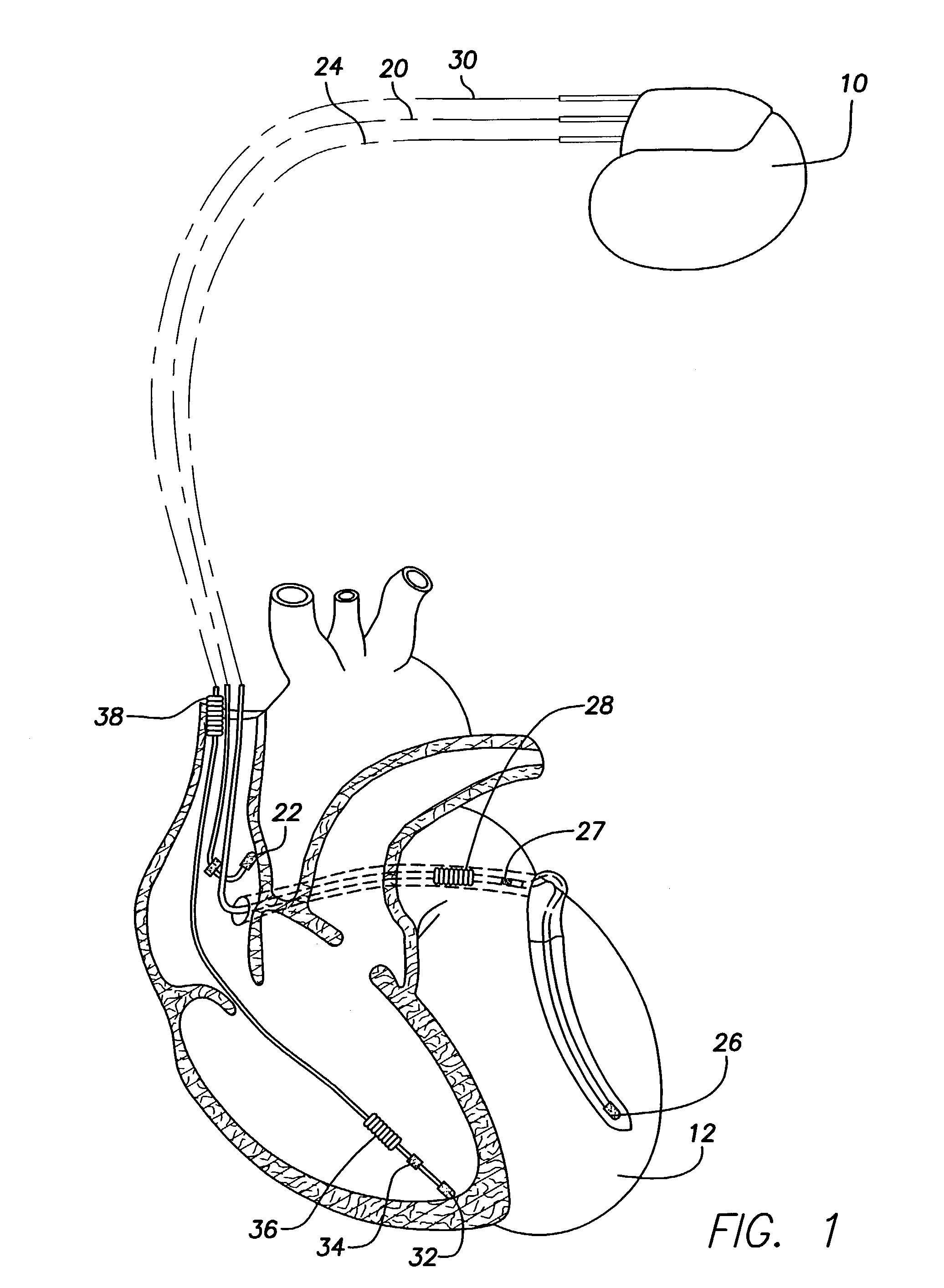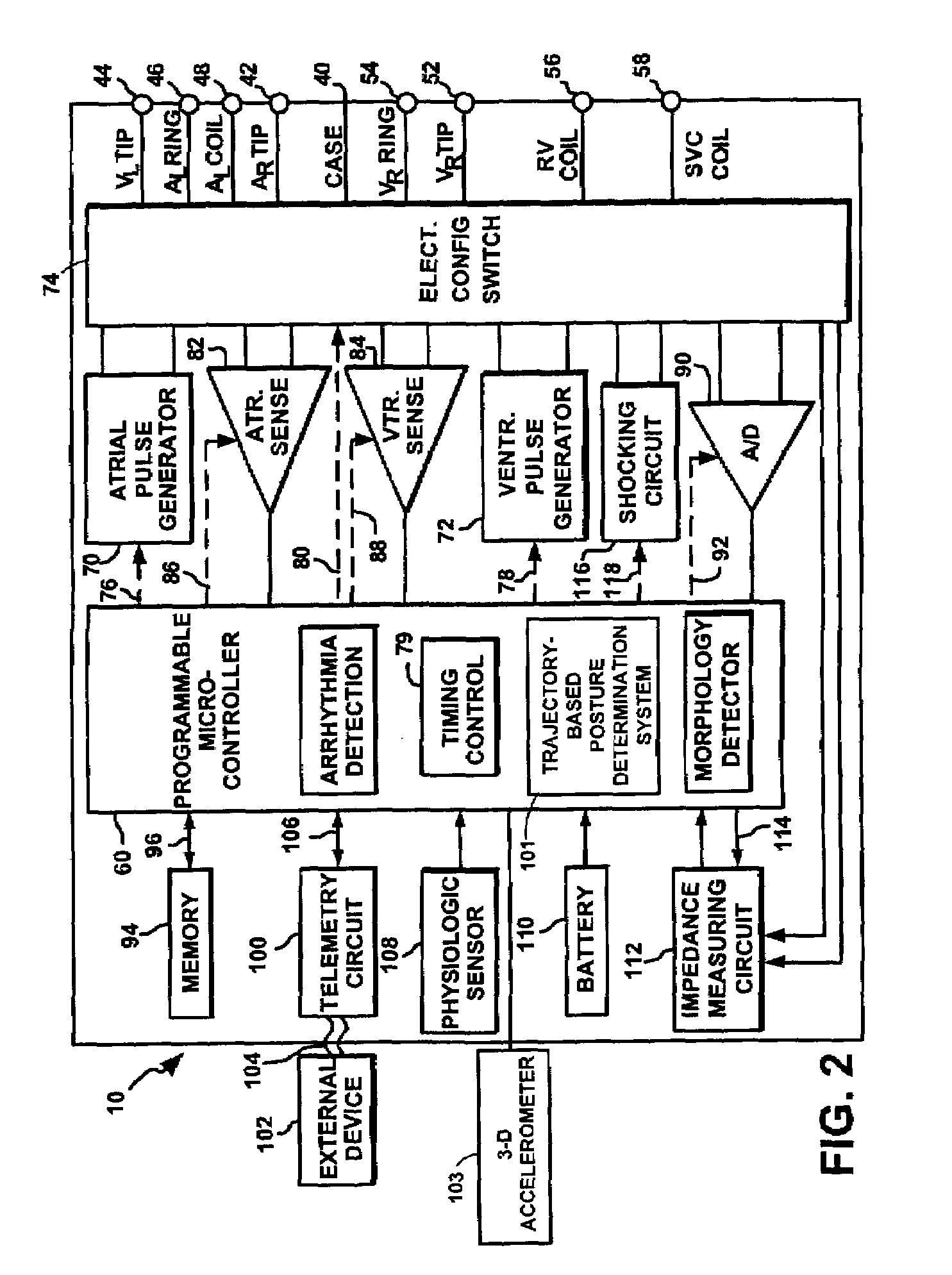System and method for determining patient posture based on 3-D trajectory using an implantable medical device
a technology of a patient posture and a 3-d trajectory, applied in electrotherapy, therapy, etc., can solve the problems of insufficient merely detecting the degree of activity of the patient, inability to distinguish between standing still and sitting still, and inability to reliably use techniques to distinguish between standing posture and standing postur
- Summary
- Abstract
- Description
- Claims
- Application Information
AI Technical Summary
Benefits of technology
Problems solved by technology
Method used
Image
Examples
Embodiment Construction
[0031]The following description includes the best mode presently contemplated for practicing the invention. The description is not to be taken in a limiting sense but is made merely for the purpose of describing the general principles of the invention. The scope of the invention should be ascertained with reference to the issued claims. In the description of the invention that follows, like numerals or reference designators will be used to refer to like parts or elements throughout.
[0032]Referring to remaining figures, exemplary posture detection techniques will now be described. Initially, an overview of an implantable cardiac stimulation device is provided with reference to FIGS. 1 and 2 and an overview of an external programmer used to program the device is then provided with reference to FIG. 3. However, it should be understood that the posture detection techniques of the invention are applicable to other implantable medical devices as well. Then, with reference to FIGS. 4–7, te...
PUM
 Login to View More
Login to View More Abstract
Description
Claims
Application Information
 Login to View More
Login to View More - R&D
- Intellectual Property
- Life Sciences
- Materials
- Tech Scout
- Unparalleled Data Quality
- Higher Quality Content
- 60% Fewer Hallucinations
Browse by: Latest US Patents, China's latest patents, Technical Efficacy Thesaurus, Application Domain, Technology Topic, Popular Technical Reports.
© 2025 PatSnap. All rights reserved.Legal|Privacy policy|Modern Slavery Act Transparency Statement|Sitemap|About US| Contact US: help@patsnap.com



